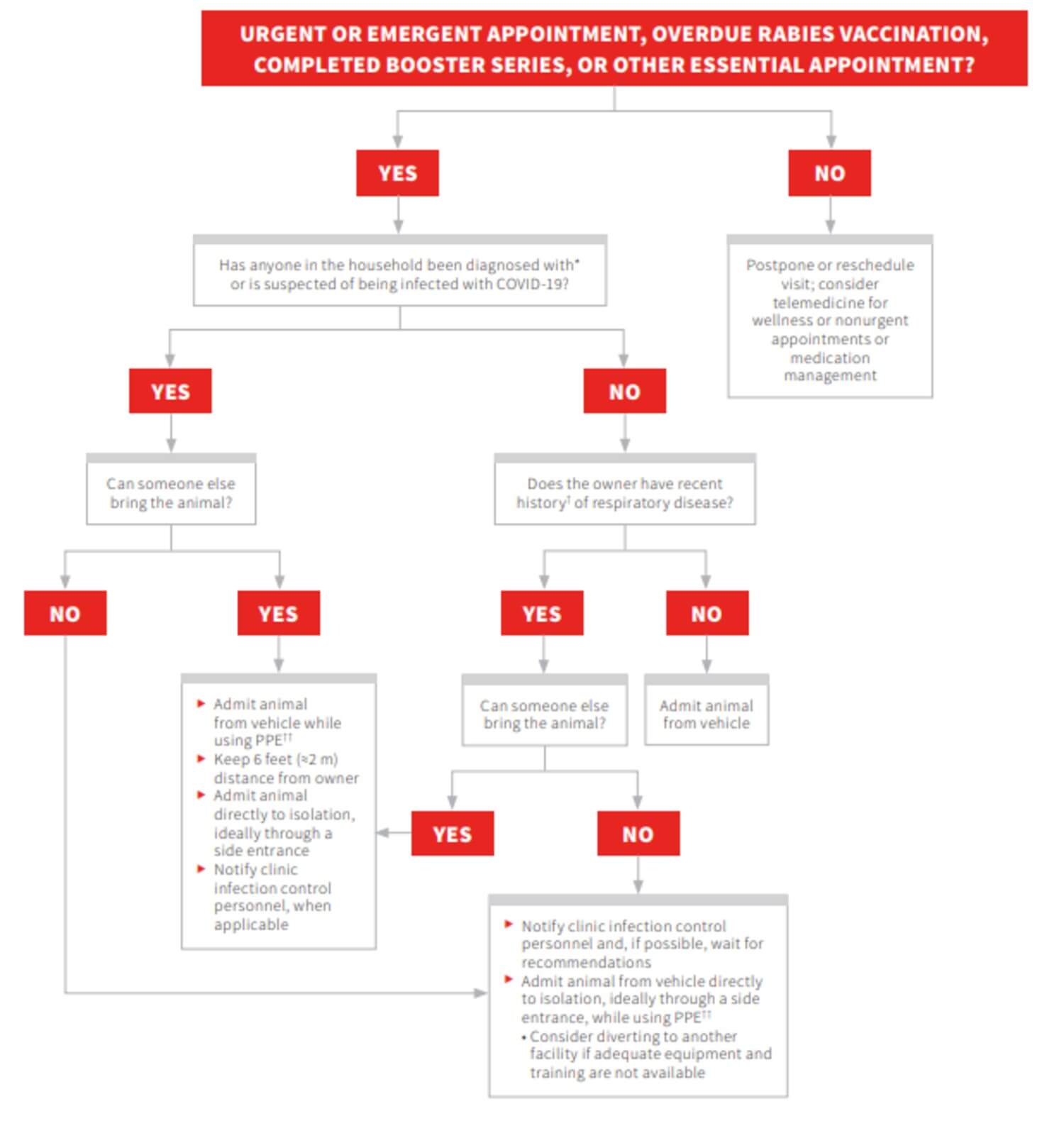Table of contents: Senior Pet Wellness
- Diet for Senior Pets
- Exercise for senior dogs
- CBD Therapy for Senior Pets
- Signs of Aging in Senior Pets
- Changes in Behavior as a Pet Ages
- Getting A Senior Wellness Exam for Your Pet
Keeping your pet healthy is your top priority, especially as they age. As your pet gets older, there are several things you can do to help keep them healthy and happy. At the Animal Medical Center of Streetsboro, we have put together a guide on senior pet wellness to help you get started!
At What Age Do You Consider Your Pet to be a “Senior”?
The age at which a dog is a senior varies based on the size of the dog. For small breeds, a senior dog is 10-12 years old. Medium-sized breeds are considered senior dogs at 8-9 years old. Giant breeds are seniors at the age of 6 or 7 years old.
Senior cats are between 11-14 years of age, and geriatric cats are 15 years or older.
Diet for Senior Pets
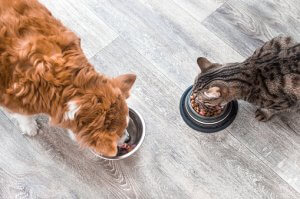 As dogs enter old age, they benefit greatly from eating less fat and fewer calories. Changes in their metabolic rate occur as they get older, causing fewer calories to be burned and more to be stored as fat.
As dogs enter old age, they benefit greatly from eating less fat and fewer calories. Changes in their metabolic rate occur as they get older, causing fewer calories to be burned and more to be stored as fat.
In some cases, dogs can begin to lose weight as they age, requiring more calories. Some older dogs have a decreased appetite due to a decreased sense of smell or taste or difficulty chewing or swallowing. In some cases, you may need to increase their diet’s fat content to increase the palatability and calorie content for your pet. This will depend on your dog’s unique needs.
Senior dogs need a minimum of 25 percent of calories from protein. This will help them maintain muscle. Even with exercise, older dogs will begin to lose muscle mass, which means they will experience losses in protein reserves. Losses in muscle tissue and protein reserves can weaken the immune system and decrease their response to physical trauma, stress, and tissue repair. It is also important to decrease the sodium in your senior dog’s diet and make sure they have a steady supply of cool water to drink.
For senior cats, their calorie intake will initially decrease. Still, as they reach around the age of 11, their energy requirements will begin to increase due to difficulty digesting protein and fats. Calories should be reduced by 20% for mature and senior cats, whereas with geriatric cats, you will want to increase their caloric intake to ensure they sustain a normal physique. You can control their caloric intake with portion feeding based on your veterinarian’s recommendations.
Avoid excessive phosphorus and sodium in your cat’s diet, and make sure they have regular water access. Be sure to monitor their water intake in case there is a reduction in their drinking.
Exercise for Senior Dogs
While diet is important, it is also crucial to your senior dog’s health to ensure they are getting enough exercise to occupy their minds and keep them at a healthy weight. As your senior pet ages, their mobility may decline, but they still require exercise. Your dog may not be able to go on a run with you or chase the ball as fast as they used to, but they can still engage in a variety of safe physical activity.
Exercise can help decrease the onset of ailments in your senior dog, such as muscle loss or arthritis. Walking is one great way to keep your dog active and is a favorite of all dogs, young and old.
With your senior pet, keep in mind that they can be more sensitive to changes in temperature, so make sure they are comfortable in the heat or cold on your walk. It is also recommended to walk your senior dog on grass or sand, which is a lower impact surface than asphalt or gravel, which can cause injury to their paws in hot weather.
If you notice your dog is stiff after your walk, reduce the length of the walk to keep them comfortable. Another great activity is swimming. If you can find a dog-friendly pool or lake nearby, swimming is a great way to give your dog a total body workout. This is a safe way for them to maintain their strength while keeping their joints and bones comfortable. If your pet does not normally swim, ask your veterinarian for dog trainer recommendations for a safer experience. 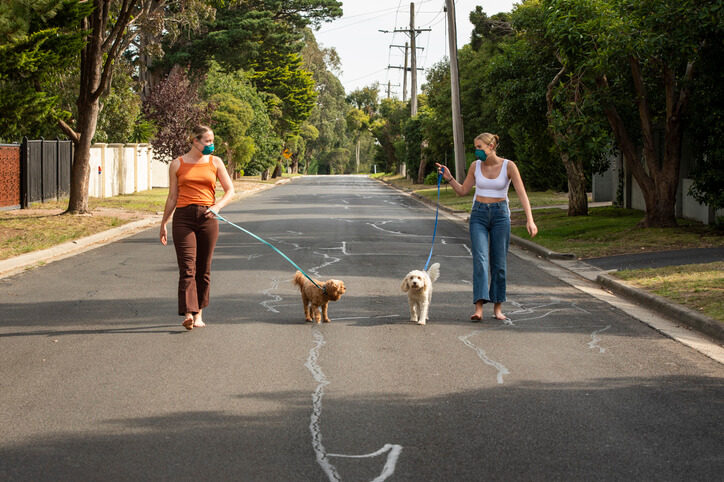
CBD Therapy for Senior Pets
Full-spectrum CBD is a popular solution for pet owners to help relieve symptoms of various health issues experienced by their pets. Whole hemp extract is derived from the marijuana plant containing 80 different cannabinoids, including THC (tetrahydrocannabinol), the psychoactive component, and the CBD (cannabidiol), which is the medical component that is used in CBD oil.
Whole hemp extract does not contain the psychoactive compound THC and is safe to administer to your pet. This extract works to relieve symptoms of various health conditions and pain by reacting with the endocannabinoid system. This is a series of receptors found in both humans and most animals. The cannabinoids interact with these receptors in your dog’s body to help relieve issues such as pain, nausea, and anxiety.
Unlike traditional pain medications, full-spectrum CBD does not damage the liver, GI tract, or kidneys. It can be used to treat conditions such as occasional discomfort, arthritis, anxiety, back pain, gastrointestinal issues, and more. Whole hemp extract can also help improve your dog’s health by:
- Enhancing their liver and kidney functions
- Supporting your dog’s performance and endurance
- Supporting your dog’s connective tissue health
- Promoting better coronary circulation
- Supporting your dog’s brain and nerve function
- Supporting digestion
- Supporting a strong inflammatory response
- Supporting healthy cellular activity
This treatment can be administered through a topical treatment applied directly to your pet’s afflicted area. Typically this treatment is administered to your pet orally. Be sure to discuss the best treatment and dosage for your pet with your veterinarian to ensure they reap the medication’s positive benefits.
Signs of Aging in Senior Pets
 Each dog ages at its own pace, but they are all eventually affected by similar age-related afflictions. Some of the most common issues include cognitive dysfunction syndrome and joint disorders. Cancer and liver failure are also common ailments in older dogs.
Each dog ages at its own pace, but they are all eventually affected by similar age-related afflictions. Some of the most common issues include cognitive dysfunction syndrome and joint disorders. Cancer and liver failure are also common ailments in older dogs.
Teeth issues and infected gums are other common issues with aging pets. Signs of tooth decay or gum infections include plaque, bad breath, swollen gums, loss of appetite, and plaque. While tooth decay is uncomfortable for your pet, it can also lead to serious infections entering the bloodstream.
Age-related diseases are another thing to keep an eye out for, such as cognitive dysfunction syndrome. If your dog is suffering from cognitive dysfunction, they may seem to be unstable or confused at times.
Unfortunately, senility and cognitive dysfunction are not curable. Still, there are various treatments and healthy aging supplements that you can give your dog to help reduce the effects. Look out for signs such as slow response times, staring at the wall, unwillingness to go outside, etc. If you notice signs like this, be sure to contact your veterinarian.
You may also notice fatty lumps called lipomas caused by your pet’s metabolic system using less energy. They are typically harmless but should be checked by a vet.
Pain and stiffness of the joints is another sign of aging. Your dog will instinctively hide aches and pains, so you may not notice them right away. As their joints continue to deteriorate, you will see their mobility lessen, especially after a long walk or when they first wake up. Consider asking your veterinarian about joint health supplements to help improve their quality of life and joint health.
Another sign of aging is the loss of senses, such as sight, hearing, and smell. The first signs of hearing or sight loss are subtle and may include your pet becoming more easily startled or possibly aggressive when someone approaches them. Your dog may also become less responsive to commands, which can be mistaken as bad behavior. Make sure to keep their bed, food, and water bowls in the same place to keep their routine easy for them. Try to avoid sudden movements to avoid startling your dog.
Incontinence is another common sign of aging in dogs. While some do not lose complete control over their bladder, the occasional accident is common.
Changes in a Pet’s Behavior After They Age
Aging can affect your dog’s behavior in a variety of ways. You may notice that your dog is less enthusiastic when greeting you or is more cautious when exploring outside.
You may also notice that your senior dog will sleep more throughout the day and has less energy than they used to. They require more sleep, so try to avoid waking them up while they sleep during the day.
For cats, arthritis is a major problem. Changes in their behavior will include an unkempt appearance and less desire to jump to high places. You will also notice that they will avoid human interaction, dislike being brushed or stroked, or decrease or increase in their sleep.
You may also notice that they will have issues getting into and out of the litter box and will not use it reliably. Some cats may cry in the middle of the night; they will act confused and may have trouble relating to family members like they usually do. These changes can be caused by aging but may also be signs of arthritis, dental disease, or kidney disease.
Getting a Senior Wellness Exam for Your Dog
Regular veterinary care is a crucial part of your pet’s health, no matter how old they are. As your pet ages, many changes occur to your pet’s maturity and physiology that can cause disease and other serious medical concerns, such as cognition problems, diabetes, cancer, arthritis, thyroid, liver, heart, and kidney disease.
By having your veterinarian conduct a regular wellness exam, they can detect these issues early on to help prevent or minimize the illness’s progression. A senior wellness exam will include a comprehensive physical exam, a dental health checkup, vaccinations and parasite control based on health and age as well as:
- Hearing and vision assessment
- Supplement and medication checks
- Life stage-specific blood tests
- Behavior consultation
- Screening for parasites
Your veterinarian will also provide advice about exercise, diet, and weight maintenance for your pet. Other exams or tests may be discussed based on your pet’s individual needs.
Senior Pet Health at the Animal Medical Center of Streetsboro
To learn more about caring for your senior pet or to schedule a senior wellness exam, contact your veterinarian at the Animal Medical Center of Streetsboro today!
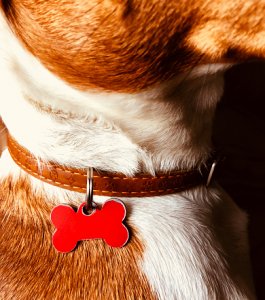 No matter where you are traveling to or how you travel there, you need to make sure your pet is microchipped for identification. You also want to make sure that your pet is wearing their collar with your name, phone number, and any other relevant contact information.
No matter where you are traveling to or how you travel there, you need to make sure your pet is microchipped for identification. You also want to make sure that your pet is wearing their collar with your name, phone number, and any other relevant contact information.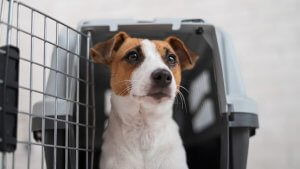 Make sure the crate is large enough for your pet to comfortably stand, sit, and turn around. You will also need to place some type of bedding in the crate, such as towels or shredded paper, to absorb any accidents.
Make sure the crate is large enough for your pet to comfortably stand, sit, and turn around. You will also need to place some type of bedding in the crate, such as towels or shredded paper, to absorb any accidents. Spaying, also called ovariohysterectomy, is a surgical procedure where the ovaries and uterus are removed to sterilize a female dog. This will prevent the dog from being able to reproduce.
Spaying, also called ovariohysterectomy, is a surgical procedure where the ovaries and uterus are removed to sterilize a female dog. This will prevent the dog from being able to reproduce. You will also notice itchy skin with food allergies. Dogs will typically itch their paws or ears and may experience gastrointestinal symptoms with a food allergy. When it comes to environmental allergens such as mold, pollen, or dust, your dog may suffer from an atopic allergic reaction or dermatitis. Typically, these are seasonal allergic reactions where you may notice your dog itching their paws, ears, ankles, muzzle, underarms, around the eyes, etc.
You will also notice itchy skin with food allergies. Dogs will typically itch their paws or ears and may experience gastrointestinal symptoms with a food allergy. When it comes to environmental allergens such as mold, pollen, or dust, your dog may suffer from an atopic allergic reaction or dermatitis. Typically, these are seasonal allergic reactions where you may notice your dog itching their paws, ears, ankles, muzzle, underarms, around the eyes, etc. The holidays are full of tasty treats for humans, but many of them can be harmful to your pet. If you plan to give your pet treats over the holidays, make sure that they are formulated just for them. Some common holiday foods to avoid:
The holidays are full of tasty treats for humans, but many of them can be harmful to your pet. If you plan to give your pet treats over the holidays, make sure that they are formulated just for them. Some common holiday foods to avoid: As dogs enter old age, they benefit greatly from eating less fat and fewer calories. Changes in their metabolic rate occur as they get older, causing fewer calories to be burned and more to be stored as fat.
As dogs enter old age, they benefit greatly from eating less fat and fewer calories. Changes in their metabolic rate occur as they get older, causing fewer calories to be burned and more to be stored as fat.
 Each dog ages at its own pace, but they are all eventually affected by similar age-related afflictions. Some of the most common issues include cognitive dysfunction syndrome and joint disorders. Cancer and liver failure are also common ailments in older dogs.
Each dog ages at its own pace, but they are all eventually affected by similar age-related afflictions. Some of the most common issues include cognitive dysfunction syndrome and joint disorders. Cancer and liver failure are also common ailments in older dogs.